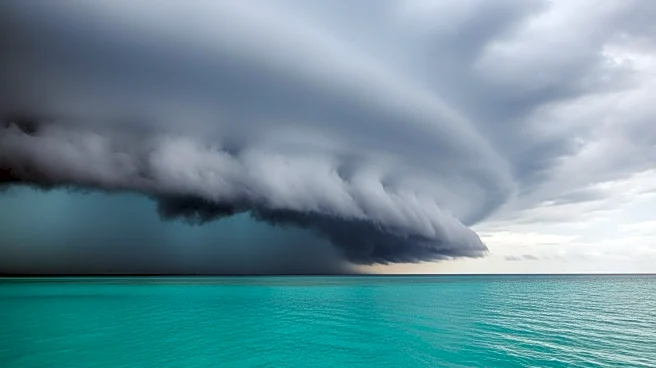What's Happening?
Tropical Storm Melissa is currently moving at an unusually slow pace through the Caribbean, with expectations to strengthen into a hurricane. The storm's slow movement is attributed to weak upper-level winds, allowing it to linger over the Caribbean Sea,
which is experiencing unusually warm waters. This slow pace increases the potential for the storm to intensify into a major hurricane, possibly reaching Category 3 or higher. The slow movement of storms like Melissa is becoming more common, with studies suggesting a link to global warming, although this connection is not fully established. The slow pace of such storms can lead to increased rainfall and storm surges, posing significant flooding risks.
Why It's Important?
The slow movement of Tropical Storm Melissa poses a significant threat to the Caribbean, particularly Jamaica and Hispaniola, due to the potential for prolonged heavy rainfall and flooding. This trend of slower-moving storms could lead to more frequent and severe flooding events, impacting infrastructure, agriculture, and local economies. The potential link to climate change suggests that such storms could become more common, necessitating improved disaster preparedness and response strategies. The increased rainfall from these storms can exacerbate existing vulnerabilities in affected regions, leading to long-term economic and social challenges.
What's Next?
As Tropical Storm Melissa continues its slow progression, it is expected to intensify over the coming days. The storm's path suggests it will move closer to Jamaica and Haiti, with the potential to become a major hurricane by the weekend. Authorities in the region are likely to issue warnings and prepare for possible evacuations. The slow movement and potential intensification of Melissa highlight the need for ongoing monitoring and preparedness efforts to mitigate the impacts of such storms on vulnerable communities.















